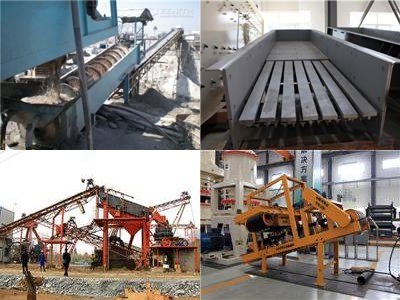Don't miss our holiday offer - 30% OFF!
What Are The Key Features Of A Hammer Crusher Machine?

Hammer crusher machines are pivotal in the realm of industrial crushing, offering robust solutions for reducing various materials into smaller, more manageable sizes. As a cornerstone in the repertoire of crushing equipment, understanding the intricacies of these machines is essential for those involved in heavy industrial operations. In this comprehensive guide, we delve into the key features, components, operating principles, applications, and benefits of hammer crusher machines.
Introduction: Understanding Hammer Crusher Machines
At the heart of every hammer crusher machine lies a robust crushing chamber, where materials undergo the crushing process. Typically, these machines feature a rotating shaft fitted with hammers that deliver powerful impacts to the materials, breaking them down into smaller particles. The design of the crushing chamber and the arrangement of the hammers play crucial roles in determining the efficiency and effectiveness of the crushing process.
Key Components of Hammer Crusher Machines
The key components of a hammer crusher machine include the rotor, hammer head, grate, impact plate, and liner. The rotor serves as the main driving force behind the crushing action, rotating at high speeds to deliver kinetic energy to the hammers. The hammer head, typically made of high-quality alloy steel, is responsible for delivering the crushing force to the materials. Grates and impact plates are strategically positioned within the crusher to control the discharge size and ensure uniform particle distribution, while liners protect the crushing chamber from wear and tear.
Operating Principles of Hammer Crusher Machines
Hammer crusher machines operate on the principle of impact crushing, where the incoming materials are subjected to high-speed impacts from the rotating hammers. As the materials collide with the hammers and the impact plates, they are fragmented into smaller particles. The size of the final product can be adjusted by changing the gap between the impact plates and the rotor or by adjusting the speed of the rotor. Additionally, some hammer crusher machines may incorporate features such as reversible rotors to enhance versatility and productivity.
Applications and Benefits of Hammer Crusher Machines
Hammer crusher machines find widespread applications across various industries, including mining, construction, metallurgy, and chemical processing. These versatile machines are capable of crushing a wide range of materials, from limestone and coal to ores and aggregates. The benefits of hammer crusher machines include high production capacity, low operating costs, and relatively simple maintenance requirements. At Zenith, we offer a range of hammer crusher machines tailored to meet the specific needs of our customers, ensuring optimal performance and reliability in heavy industrial environments.
In conclusion, understanding the key features of hammer crusher machines is imperative for anyone involved in industrial crushing operations. As a leading provider of heavy industrial equipment, Zenith offers a comprehensive range of hammer crusher machines designed to deliver superior performance, efficiency, and durability. Whether you’re in the mining, construction, or chemical processing industry, our hammer crusher machines are engineered to meet the most demanding requirements, ensuring maximum productivity and profitability for your operations.